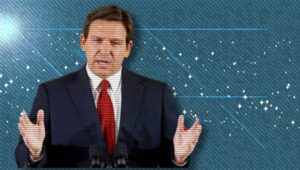An American credit rating agency is warning that more higher education institutions will close amid enrollment declines.
FitchRatings released a new report on Sept. 21 warning of college and university closures and “significantly restructured operations” across the United States higher education sector.
“Enrollment declines and related pressures on tuition and student fee growth prospects have been a common thread in each of the negative rating actions Fitch has taken year to date,” stated the agency. “Colleges will need to proactively make decisions on what programs, departments, capital plans, and assets they believe best fit their organizational and strategic goals.”
“Institutions without strong brands that are located in markets with the steepest drop in college-aged population are the most vulnerable to enrollment declines,” FitchRatings continued. “These markets also often have a multitude of public and private institutions competing vigorously for a shrinking pool of students.”
FitchRating noted that “meaningful and persistent declines in student fee revenue, usually the result of unexpected enrollment drops, are common precursors to consolidation or closure.”
“Red flags that indicate enrollment vulnerability often include volatility in incoming class size, frequent or unusual turnover in student recruitment functions, unsustainable levels of endowment support for student scholarship, and declines in the net tuition per student metric, whether due to changes in sticker price or discounting,” stated the report.
During 2021, 35 colleges closed their only or final campus. An additional 48 colleges followed suit in 2022. Institutions that were already struggling to reach enrollment goals prior to the onset of the COVID-19 pandemic were the most likely to collapse in the wake of widespread lockdowns and a conversion to online schooling.
Some smaller institutions have opted to merge rather than close. Since March of 2020, 17 private nonprofit or public schools have merged with another institution, per Best Colleges.
“This approach can be challenging. Often, the colleges that find themselves in these predicaments are relatively small and serve a niche community of students, rather than drawing from a broad, national pool,” David Attis, a managing director of research at education consulting company EAB, told The Hechinger Report in January of 2023. “They tend to be regionally specific, single-gender, religiously affiliated, or narrowly focused in what they teach. … And even when they share similarities with another college, each campus tends to have its own distinct identity and often administrators prefer to maintain autonomy.”
Higher education enrollment has been steadily declining in recent years — a trend that was exacerbated by COVID-19.
“What first looked like a pandemic blip has turned into a crisis. Nationwide, undergraduate college enrollment dropped 8% from 2019 to 2022, with declines even after returning to in-person classes,” reports Fortune.
Economists warn that the trend could result in a labor shortage in the future and lower lifetime earnings – although the experts acknowledge that the decline in enrollment largely indicates a lack of faith in the modern value of a college degree.

